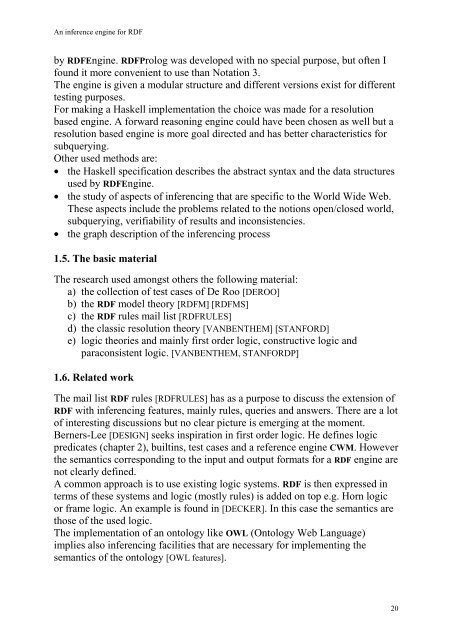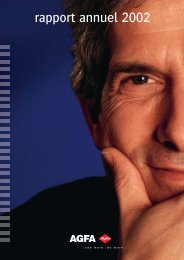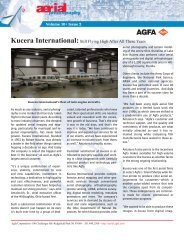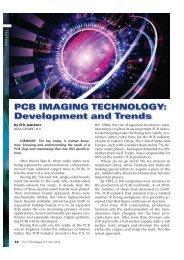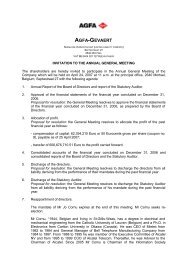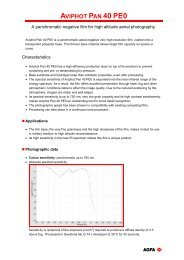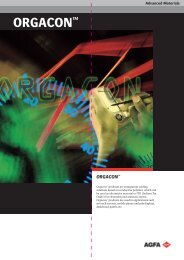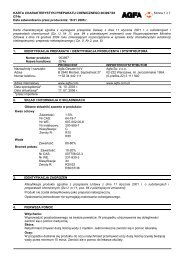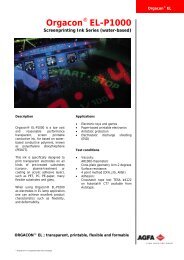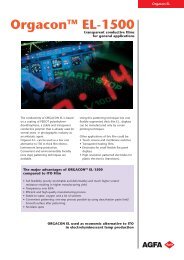An inference engine for RDF - Agfa
An inference engine for RDF - Agfa
An inference engine for RDF - Agfa
You also want an ePaper? Increase the reach of your titles
YUMPU automatically turns print PDFs into web optimized ePapers that Google loves.
<strong>An</strong> <strong>inference</strong> <strong>engine</strong> <strong>for</strong> <strong>RDF</strong><br />
by <strong>RDF</strong>Engine. <strong>RDF</strong>Prolog was developed with no special purpose, but often I<br />
found it more convenient to use than Notation 3.<br />
The <strong>engine</strong> is given a modular structure and different versions exist <strong>for</strong> different<br />
testing purposes.<br />
For making a Haskell implementation the choice was made <strong>for</strong> a resolution<br />
based <strong>engine</strong>. A <strong>for</strong>ward reasoning <strong>engine</strong> could have been chosen as well but a<br />
resolution based <strong>engine</strong> is more goal directed and has better characteristics <strong>for</strong><br />
subquerying.<br />
Other used methods are:<br />
• the Haskell specification describes the abstract syntax and the data structures<br />
used by <strong>RDF</strong>Engine.<br />
• the study of aspects of inferencing that are specific to the World Wide Web.<br />
These aspects include the problems related to the notions open/closed world,<br />
subquerying, verifiability of results and inconsistencies.<br />
• the graph description of the inferencing process<br />
1.5. The basic material<br />
The research used amongst others the following material:<br />
a) the collection of test cases of De Roo [DEROO]<br />
b) the <strong>RDF</strong> model theory [<strong>RDF</strong>M] [<strong>RDF</strong>MS]<br />
c) the <strong>RDF</strong> rules mail list [<strong>RDF</strong>RULES]<br />
d) the classic resolution theory [VANBENTHEM] [STANFORD]<br />
e) logic theories and mainly first order logic, constructive logic and<br />
paraconsistent logic. [VANBENTHEM, STANFORDP]<br />
1.6. Related work<br />
The mail list <strong>RDF</strong> rules [<strong>RDF</strong>RULES] has as a purpose to discuss the extension of<br />
<strong>RDF</strong> with inferencing features, mainly rules, queries and answers. There are a lot<br />
of interesting discussions but no clear picture is emerging at the moment.<br />
Berners-Lee [DESIGN] seeks inspiration in first order logic. He defines logic<br />
predicates (chapter 2), builtins, test cases and a reference <strong>engine</strong> CWM. However<br />
the semantics corresponding to the input and output <strong>for</strong>mats <strong>for</strong> a <strong>RDF</strong> <strong>engine</strong> are<br />
not clearly defined.<br />
A common approach is to use existing logic systems. <strong>RDF</strong> is then expressed in<br />
terms of these systems and logic (mostly rules) is added on top e.g. Horn logic<br />
or frame logic. <strong>An</strong> example is found in [DECKER]. In this case the semantics are<br />
those of the used logic.<br />
The implementation of an ontology like OWL (Ontology Web Language)<br />
implies also inferencing facilities that are necessary <strong>for</strong> implementing the<br />
semantics of the ontology [OWL features].<br />
20


